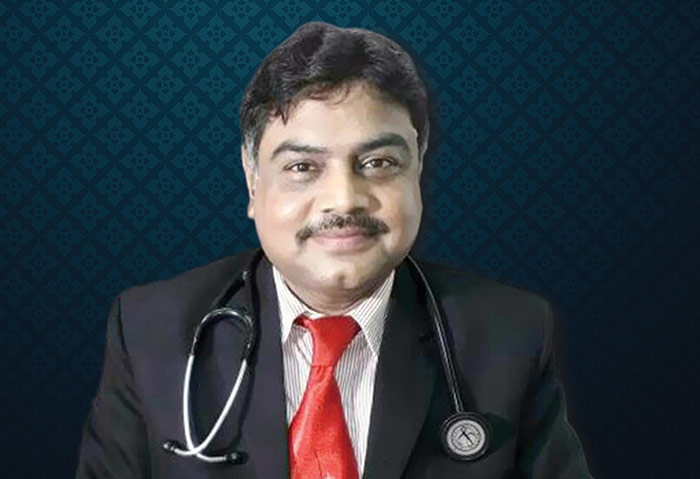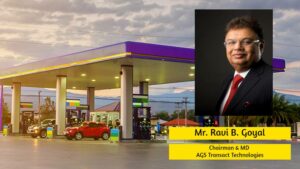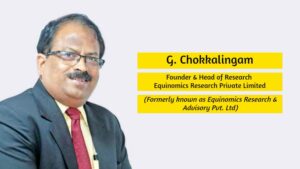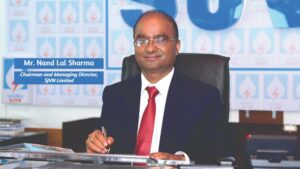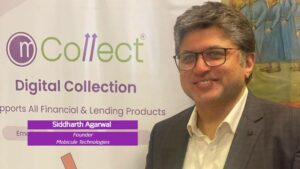Face to Face with Dr Anil Sharma
Prof Dr Anil Sharma, MBBS, MD, DM (Cardiology), FACC (USA) is a renowned Senior Interventional Cardiologist, who has contributed extensively to the growth and development of Interventional Cardiology in India. He has worked at the prestigious Mount Sinai Hospital, New York, USA and University of Torino Hospital Italy. Dr Anil Sharma is one of the few Indian Cardiologist who got Advanced Fellowship in Complex Angioplasty from Italy. He has been attached to Bombay Hospital since 1997. Recently, two of his Angioplasty cases were selected for “Challenging Angioplasty ” in most prestigious Angioplasty Conference TCT at Denver Colorado US. Although he is an expert in Angioplasty for Heart attack, his dream is to make India free of heart attack by prevention.
Dr. Anil Sharma can be reached at [email protected] or at Room no 120, MRC 1st Floor, Bombay Hospital between 9am to 5pm. Also can be contacted at 09820071077/ 09820028666/ 022 40511333.
Heart disease is the leading cause of death for people of most ethnicities in the world. What is the situation in India?
Yes, in India also it has emerged as the number one killer in both urban and rural areas, yet most of the people are not aware about it. This unawareness leads to ignorance about a healthy lifestyle. Due to the drastic changes in lifestyle, such as increasing stress, tobacco, smoking, junk food and sedentary habits, Myocardial Infarction (Heart Attack) is on the rise. In India 60 million (4% rural and 14% urban population) people are suffering from coronary heart disease. Over 17 million people die each year from cardiovascular diseases (heart attack and brain attack), making these the leading cause of death worldwide. A recent research shows a reversal in disease patterns in the country from communicable diseases to non- communicable or lifestyle diseases.
What is a Heart Attack?
Heart Attack happens when there is 100% blockage (due to clot and cholesterol) of one of the coronary arteries (which supplies blood to the heart muscle) leading to muscle damage. This can cause less functioning of heart, heart failure and even death. Half of the deaths due to heart attack occur within the first hour, making first hour “Golden Hour”.
What are the major risk factors and the symptoms of heart attack?
Common risk factors are diabetes, high blood pressure, high Cholesterol, smoking and tobacco, junk food, sedentary and stressful lifestyle and family history of heart attack. Most commonly pain in the chest (sometimes pain may be anywhere from jaw to umbilicus) usually associated with sweating, nausea, vomiting and breathlessness. In diabetics, elderly and females it may be silent also.
What is the treatment for heart attack?
Since Time is Muscle, Early Angioplasty (Opening the blocked artery by balloon) is the preferred treatment if it can be delivered in a timely manner by an experienced Cardiologist. After removing blockage cardiologist put a Stent. If angioplasty cannot be done due to unavailability of a Cardiologist, Thrombolysis (Clot dissolving therapy) followed by Angioplasty is the most feasible and beneficial therapy in Heart Attack in a city like Mumbai. Thrombolytic therapy dissolves the clot only while angioplasty takes care of clot and cholesterol both.
How to prevent Heart Attack?
One has to take a little precaution and be very selective in food habits. Avoid sugar, fried, salty, preserved, junk food, excess alcohol, tobacco, smoking. Make it a habit to eat whole grain, sprouts and high fiber food, fresh fruits, vegetables and salad. Exercise daily for 30 minutes, do regular yoga and keep yourself away from stress and people with negative thinking. I always advise my patients that whatever is your blood group always B positive.



